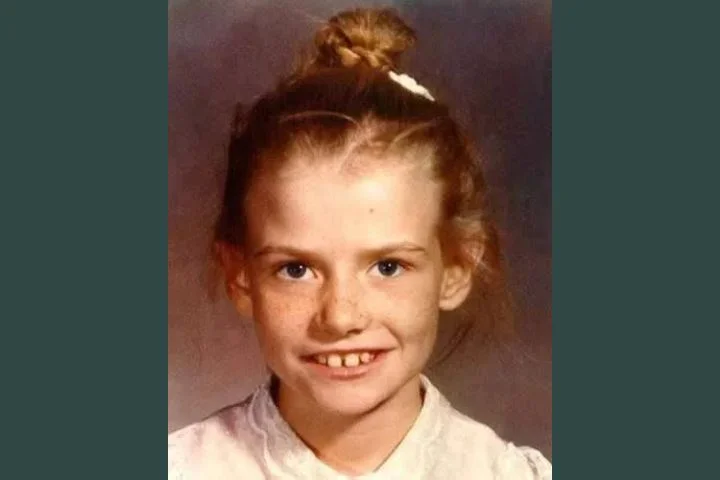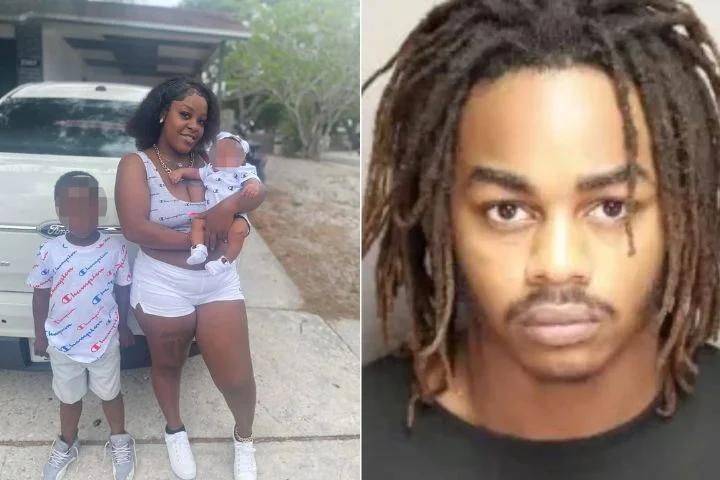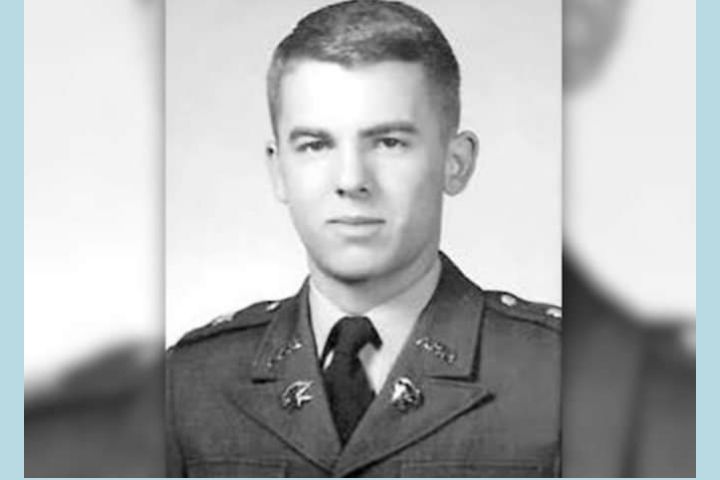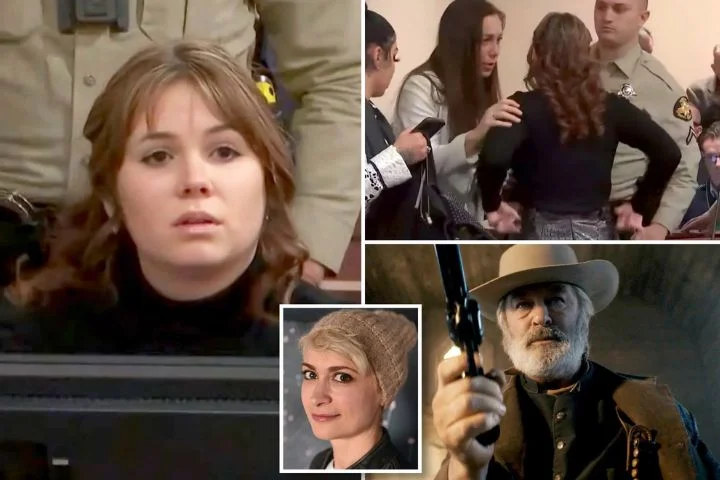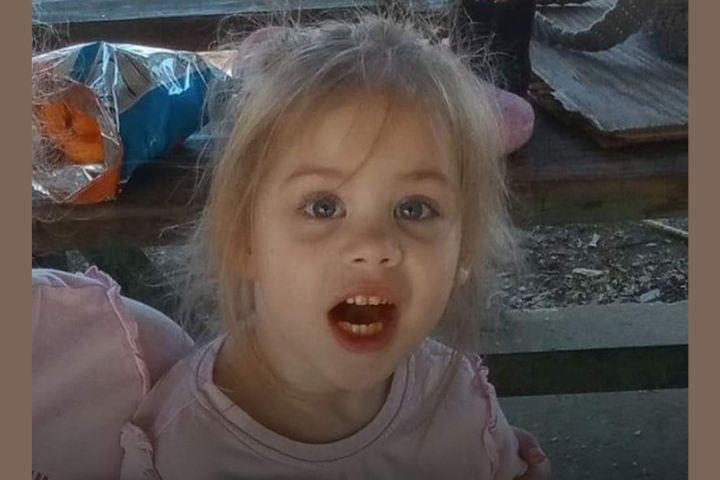Tricia Kellett was in a great mood when she got home from school on Friday, May 7, 1982. She proudly presented her mother, Dorothy Jo, with a painting she had made for her for Mother’s Day, then asked if she could play outside. Tricia always had energy to burn and had trouble sitting still for long periods of time. Unlike many kids, she grew bored whenever she tried to watch television. She preferred to be on the go all the time. Her father would be arriving shortly — she and her brother were going to be spending the weekend with him — but she didn’t want to sit around and wait for him. Her mother agreed that she could go outside, but reminded her to watch for her father’s car. Tricia promised she would and then bounded out of the front door.
Tricia, like most 8-year-old girls, loved puppies. Her neighbor’s dog had recently given birth to a litter, and Tricia loved visiting so she could play with them. Her neighbor wasn’t at all surprised when Tricia appeared on her porch that afternoon, begging to be allowed to see the puppies. The little girl played with them for a while, then reluctantly got ready to leave. She knew her father would arrive any minute, so she headed back towards her house. She would never get there.
Brad Kellett arrived at 4:00 pm and found his son waiting expectantly for him, but there was no sign of Tricia. Brad assumed Tricia had simply lost track of time, and after waiting for a few minutes he checked with Dorothy Jo to see if she knew where Tricia might have gone. They searched the immediate area, but Tricia was nowhere to be found. With the help of neighbors, they expanded the search area, combing through a nearby park and churchyard where Tricia would sometimes go to play. They had no luck.
Learning that Tricia was missing, a couple children came forward and said they had seen Tricia walking down the sidewalk with an unknown male. They appeared to be having a conversation, and then Tricia got into a blue car with him. Dorothy Jo panicked when she heard this, and immediately called the police while neighbors continued searching for the missing child. The Chicago Police Department was initially unconcerned. It would take several more phone calls from Dorothy Jo before they finally sent an officer out at 10:00 pm. By this point, Tricia had been missing for more than six hours.
According to witnesses, Tricia had been seen walking with a man near the corner of Leland and Ashland Aves. The man was in his early 30s, around 6 feet tall, and weighed approximately 200 pounds. He had brown hair and a mustache. Tricia and the man were then seen getting into a blue four-door car, most likely a 1979 Dodge or Pontiac, with damage on the right front door. Some of the witnesses thought that there had been a second man already inside the car when Tricia got in, but no one was able to provide a description of him.
Police focused on trying to find the man seen talking with Tricia and the blue car. One particularly observant neighbor noticed that the license plate started with the letters “QR” and patrol cars were instructed to keep an eye out for the vehicle.
Other witnesses believed they saw Tricia and the unidentified male at the corner of Leland and Malden Avenues, a few blocks away from the first sighting. There were also reports that Tricia had been seen with this man going into the Malden Arms Hotel later that night; police were unable to confirm these sightings.
Despite having detailed information about the suspect and his vehicle, police never identified the man. The search for Tricia went cold almost immediately, though there were sightings of her called in from as far away as Fresno, California. Detectives followed up on each potential sighting but were never able to locate the missing girl.
Brad and Dorothy Jo made several public pleas for their daughter’s return, and both of them believed that Tricia was still alive. Tricia’s ninth birthday was just two weeks after she went missing, and her parents bought gifts for her, praying she would be home to open them. They were devastated when their hopes were dashed.
Dorothy Jo took her daughter’s disappearance especially hard. Tricia loved to wear clogs, and her mother would tease her when she wore them because of how much noise they made. She could always tell when Tricia was on her way home because she could hear the clogs coming from a block away. After Tricia went missing, Dorothy Jo would wake up in the middle of the night, convinced she could hear Tricia’s clogs. Several times she got up and ran outside, only to find a quiet, empty street. She would later move away from Chicago, unable to deal with the memories of a happier time. She made sure to keep the same phone number; she remained convinced that Tricia would one day call.
Although the investigation into Tricia’s disappearance remained active, detectives never made any real progress on the case. Tricia’s photo was featured on milk cartons in 1985, which brought in reports of several potential sightings of her, but all of them led to de*ad ends.
Both of Tricia’s parents spent the rest of their lives convinced that their daughter was alive somewhere, and made it their mission to bring her home. Unfortunately, they both died without ever knowing what happened to Tricia. As far as they — and the rest of the public — knew, police never had any suspects and had no idea what might have happened to Tricia. They were wrong.
In 2018, NBC took an interest in the cold case and filed a request under the Freedom of Information Act to gain access to the case file. What they learned was shocking. Shortly after Tricia went missing, police identified Marvin Pontarelli as a person of interest. He was the registered owner of a blue car that matched the description of the one witnesses saw Tricia get into that Friday afternoon, and he matched the description of the man seen walking with her. He had an extensive criminal background that included charges of rape, kidnapping, and sexual assault. He was brought in for questioning the day after Tricia went missing, and he failed a polygraph examination about her disappearance. Police were certain they had the person responsible for abducting Tricia.
Three days after the disappearance, three separate witnesses picked Pontarelli out of a lineup, convinced he was the man they had seen with Tricia. Despite the positive identification, Pontarelli was never charged in Tricia’s case. He was arrested for several different crimes, including corruption of a minor and child pornography, but these charges were dropped about six months later. The children involved refused to testify against him, and it was commonly believed that Pontarelli had bought their silence as their families suddenly had access to large amounts of cash.
Marvin Pontarelli’s name would continue to be mentioned in reference to Tricia’s disappearance. In 1984, a witness told police that Pontarelli had been overheard telling people he had abducted Tricia so he could photograph her having sex with a man named Larry Fassler. Pontarelli owed Fassler a substantial amount of money, and he planned to use the photographs to blackmail him so he wouldn’t have to pay. A Chicago police report notes that Fassler’s address book was searched and they found Tricia’s name and address entered in the book. Right underneath this entry, he had written Marvin Pontarelli’s name.
In 1985, Pontarelli was arrested in Arizona on unrelated charges, and Chicago Police took the opportunity to interview him while he was in custody. He gave conflicting answers, at one point saying that Larry Fassler had ki*lled Tricia, at other times tearfully admitting he had done it and buried her on his family’s Illinois property. Later he would retract all these statements and say that he thought Larry Fassler had taken Tricia to Mexico, and he didn’t know what happened to her after that.
No charges were ever filed against either Larry Fassler or Marvin Pontarelli in Tricia’s case. Pontarelli died in an Arizona prison in 1994, and Chicago police are convinced that he was the person responsible for k*illing Tricia. They believe that he buried her body in the foundation of the Pontarelli Apartments; they were in the initial stages of construction at the time Tricia went missing.
The information NBC uncovered with their FOIA request makes it clear that police believed Tricia was ki*lled almost immediately after she was abducted, but this was never relayed to the public. Tricia’s parents and siblings were never made aware of the fact that there was a suspect in the case, nor did they know police believed Tricia had been mur*dered. Both Dorothy Jo and Brad died without ever learning what might have happened to their daughter, and Tricia’s siblings were shocked when they learned of the information that had been kept secret. Officially, Tricia is still listed as a missing person; it’s unclear why Pontarelli never faced charges in her case and it’s unlikely her family will ever get justice.
Tricia Kellett was 8 years old when she went missing in 1982. She had blonde hair and hazel eyes. At the time of her disappearance, she was 4 feet tall and weighed 70 pounds; she also had a space between her two front top teeth. She was last seen wearing a blue sweater, blue jeans, and brown shoes. She was almost certainly the victim of foul play. If you have any information about Tricia, please contact the Chicago Police Department at 312–747–5789.
